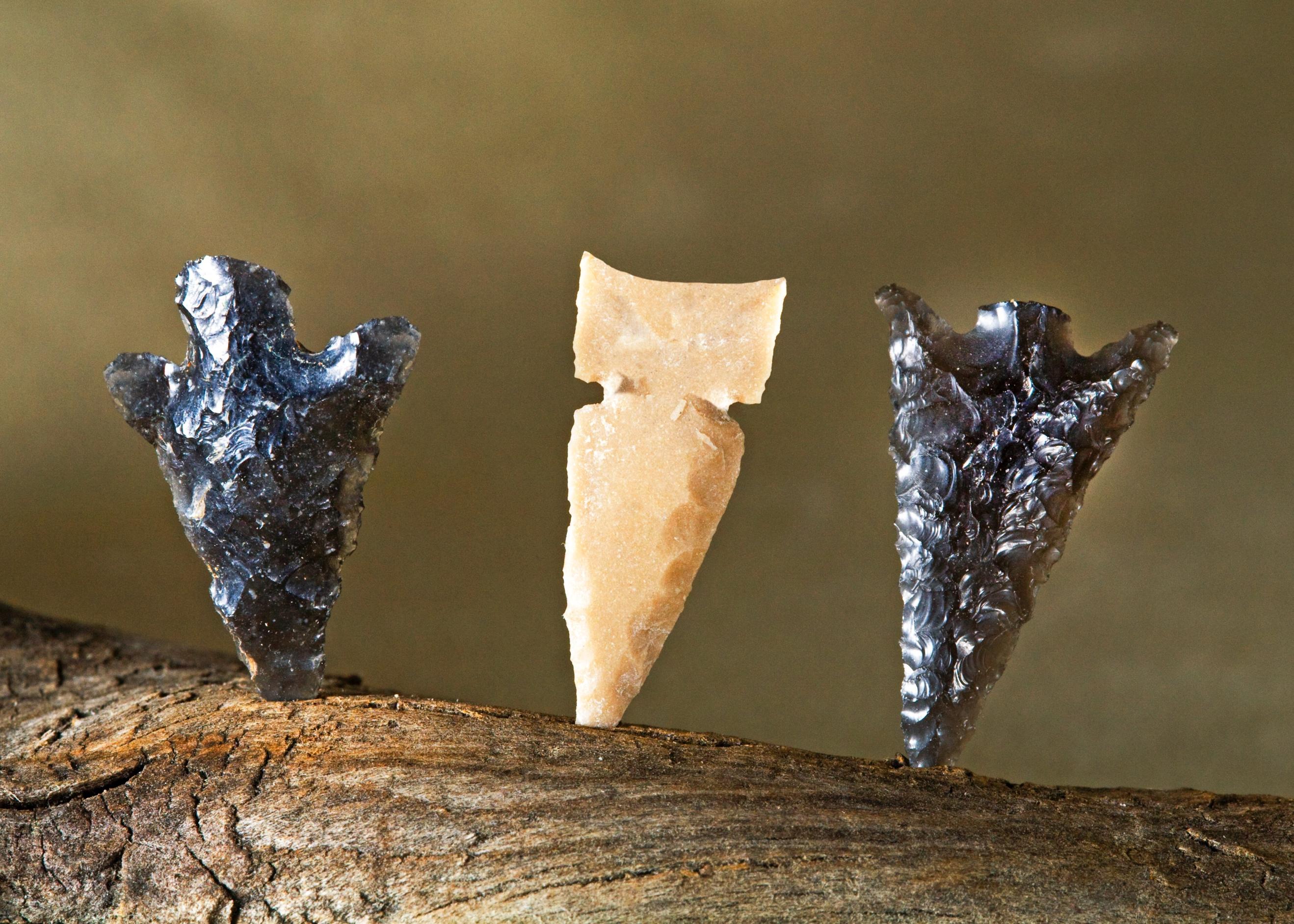
6 minute read
Postcard from the Anasazi Buddy Mays
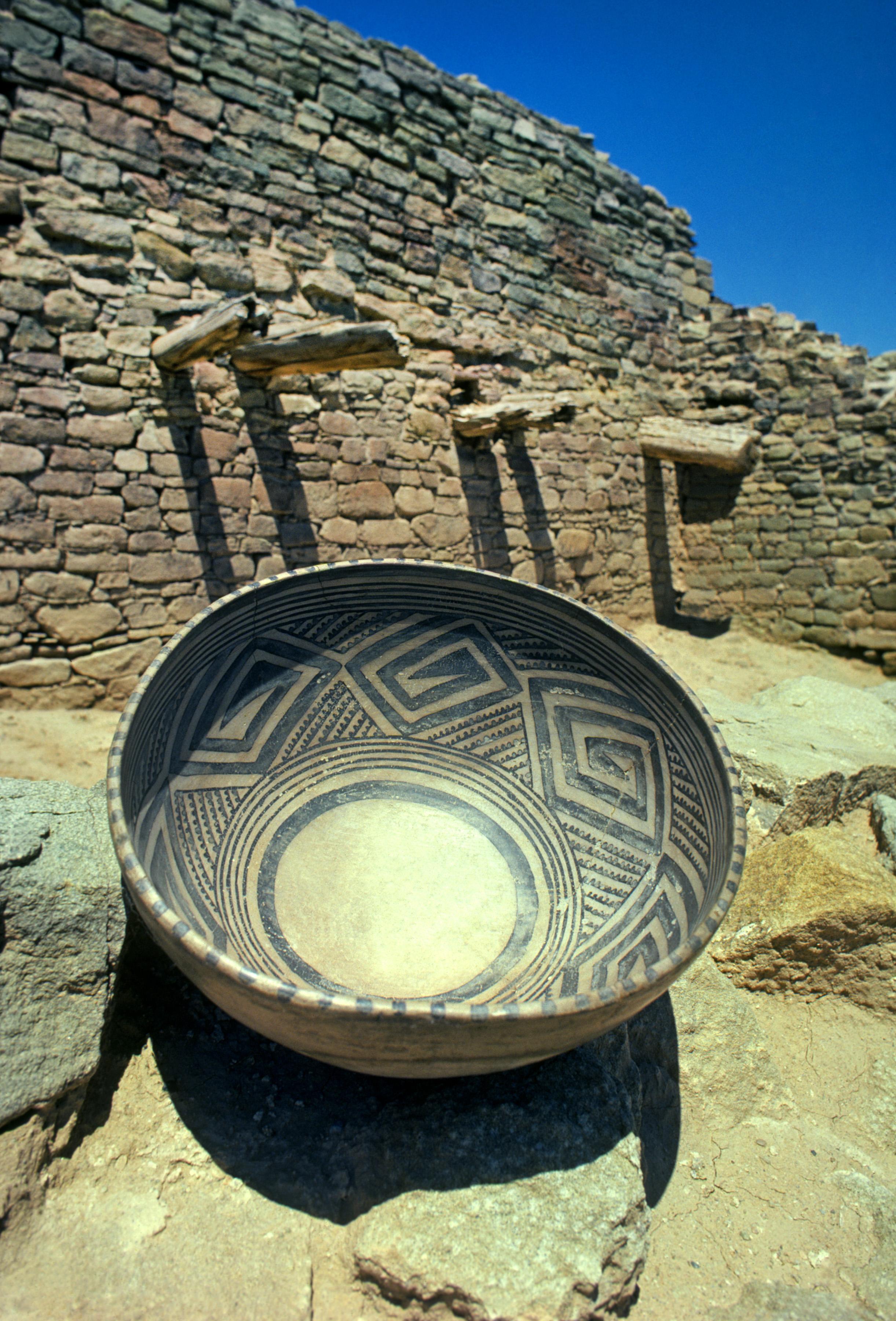
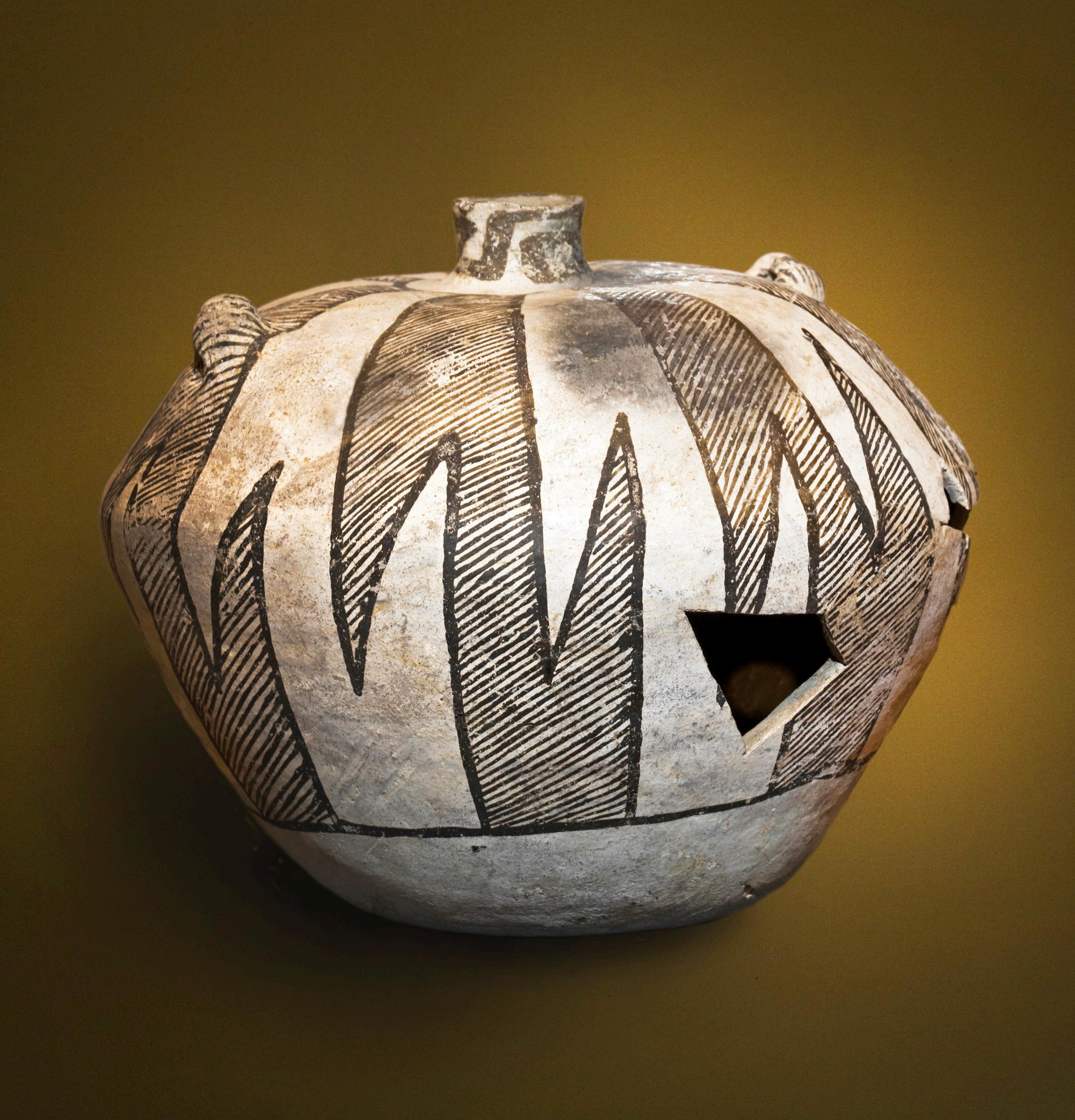
Advertisement
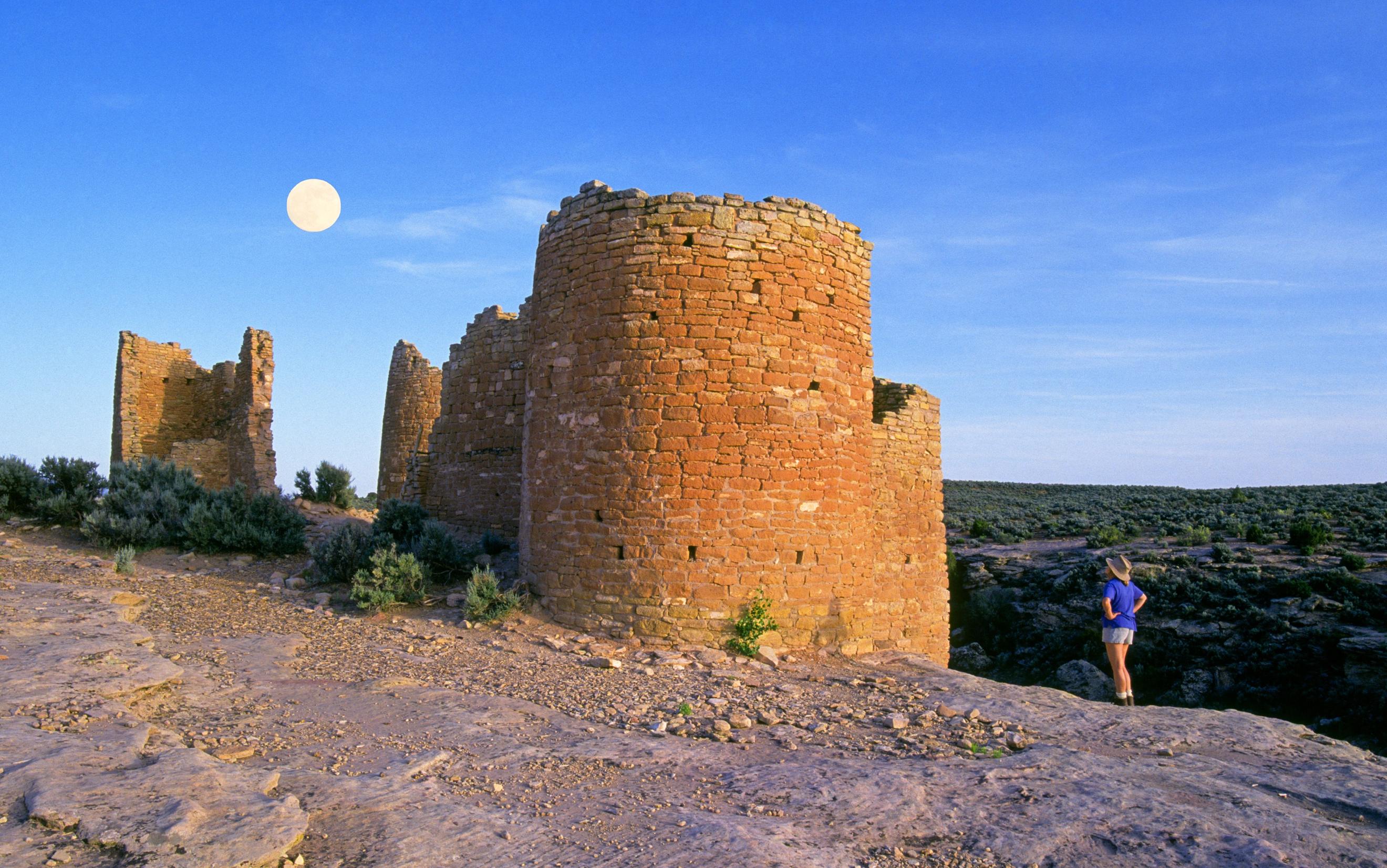
HovenweepNational Monument
A Postcard from the Anasazi
Story & Photos by Buddy Mays
I can’t recall exactly when I first developed an interest in southwestern archaeology, but it was years ago — back when the sharp triangular doodad made from flint or obsidian you found lying in the sand (and naturally put in your pocket) was called an arrowhead instead of a “projectile point,” and the crumbling stone dwellings of preColumbian people were Indian ruins, not “primitive, atypical habitation survey sites.” Today, mutated terminology notwithstanding, my interest is still with me. I can think of no better divertissement than to poke and ponder a few hours or days away in one of the many archaeological sites scattered throughout the American Southwest.
Of the dozen or so culturally diverse groups of prehistoric people who lived in this arid region, the most interesting, in my opinion, were the Anasazi (a Hopi word meaning “old enemies”), an intelligent, artistic society of foragers and farmers who inhabited the Four Corners region of what is now northwestern New Mexico, northeastern Arizona, southeastern Utah and southwestern Colorado between 500 and 1400 A.D. Not only did the Anasazi bring agriculture and art to their prehistoric pinnacles, but they also
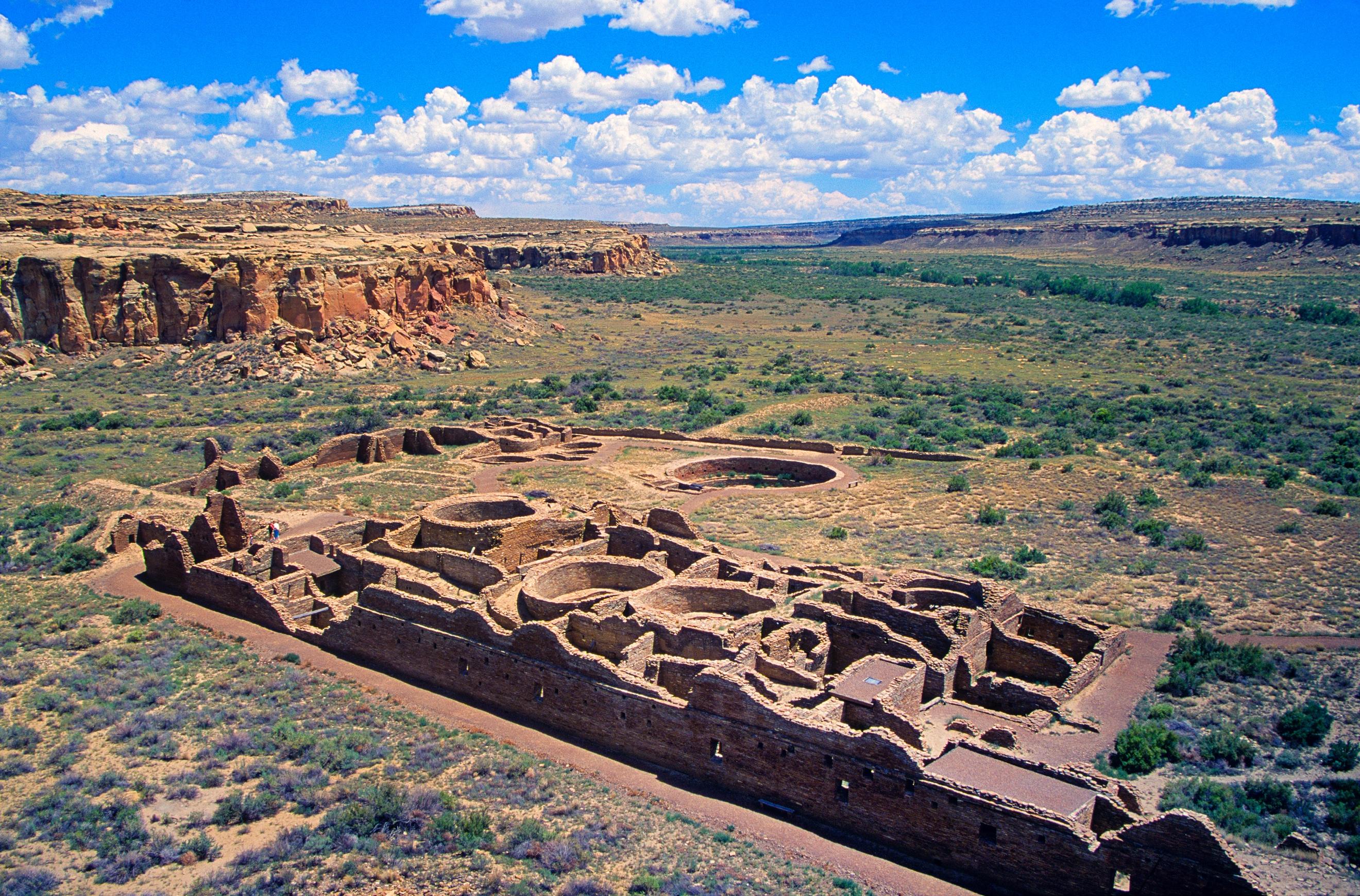
Chaco Canyon National Historical Park
built such elaborate and well-constructed domiciles -- called pueblos by early Spanish explorers -- that many have survived the destructive hands of time and erosion for more than a thousand years.
Today, many of largest and more important remnants of the Anasazi Culture fall under the protection of the National Park Service, and the best-preserved and most archaeologically important of these is Chaco Canyon National Historical Park, 80 miles northeast of Gallup, New Mexico. At its peak, Chaco was the Mecca of Anasazi Culture, a center of celebration and business where thousands of Indians — many who traveled hundreds of miles -- gathered several times each year to trade, exchange news, and celebrate the beginning of planting and harvest seasons. To accommodate these annual visitors, Chaco’s permanent residents built dozens of sprawling, multi-story, stone structures called “Great Houses,” along a nine mile stretch of the canyon, some of them four stories high and containing eight hundred or more rooms. The best preserved, today called Pueblo Bonito (pretty town), was the largest single structure in North America when it was completed around 850 A.D. Wide, hard-packed, “parade route” roads connected the Great Houses to each other, an interesting and somewhat enigmatic fact considering that the Anasazi did not have the wheel.
Because of dwindling resources, Chaco Canyon was abandoned by 1175 A.D. Forests that had once blanketed the surrounding hills had been cut down for firewood and building materials. After centuries of use, the local farmland was almost certainly infertile so annual harvests of corn and beans that for so long had sustained Chaco’s population were simply no longer available. Archaeologists think descendants of Chaco Canyon’s Anasazi migrated south and initiated several of the present-day Indian Pueblos in New Mexico and Arizona.
Northeast of Chaco Canyon, encompassing a series of pine-covered ridges and steep, rock canyons, lies another sprawling aggregation of Anasazi ruins. Mesa Verde National Park, ten miles east of Cortez, Colorado, is what the National Park Service calls its “showcase of Anasazi culture.” Almost 4,000 pre-Columbian dwellings have been discovered here and the park’s excellent museum boasts one of the finest displays of pre-Columbian pottery,
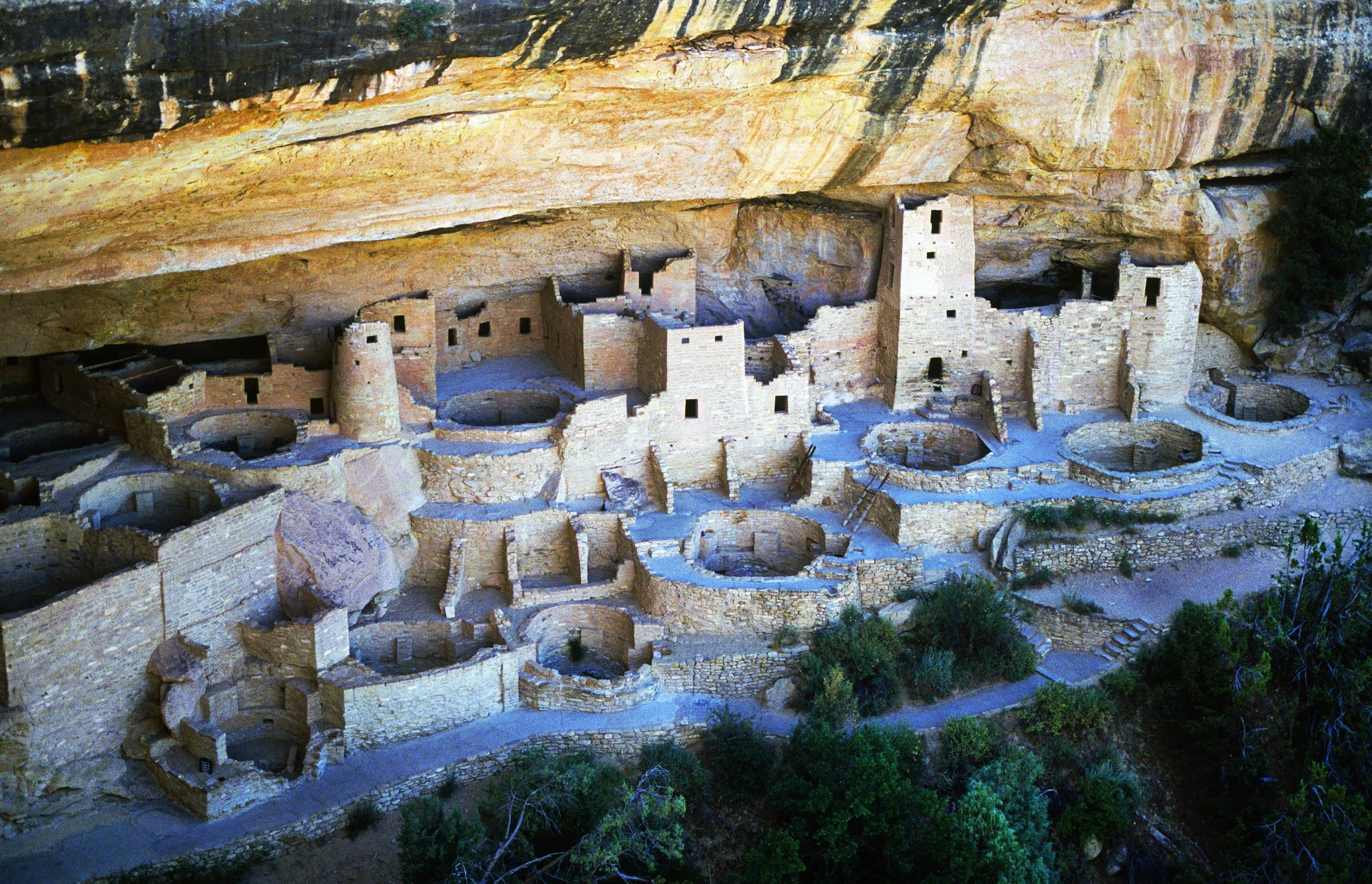
Mesa Verde National Park
weapons, primitive tools and implements in the Americas.
Anasazi farm families living in small, single-unit dwellings or subterranean pit houses, were tilling small plots of corn on Mesa Verde by 700 A.D. Two centuries later, agricultural activities had been greatly expanded as the population grew, and most of the Indians had moved into multi-room pueblos built of stone and mud on ridgetops and canyon rims. Dogs and turkeys had been domesticated, beautiful black and white glazed pottery was in wide use, and men hunted with simple but deadly devices called “atlatls” (dart-throwers) instead of more primitive, and less effective, flint tipped spears.
But a major lifestyle change took place in the Mesa Verde communities about 1250 A.D. Raiding nomadic tribes may have invaded the mesa, or because of climate change resulting in drought, squabbles between local communities over distribution of food and water might have taken place. Whatever happened, the Anasazi suddenly left their mesa-top and canyon rim towns and built smaller, heavily fortified villages in the caves and amphitheaters in Mesa Verde’s network of steep-walled canyons.
Such a massive relocation must have been difficult for these early people. Millions of buildings stones, for instance, had to be carried by hand into the canyons from the rims. Food, firewood, water, every necessity of life, in fact, was transported manually up and down the steep cliffs. In the end, however, the move into the canyons was futile, because half a century later -sometime around 1300 A.D. -- Mesa Verde was abandoned. Like the people of Chaco Canyon earlier, the residents of Mesa Verde are thought to have migrated south to begin other pueblos in more water-rich areas.
Of all the ancient Anasazi communities in the Four Corners region, my favorite is Hovenweep National Monument, tucked away in the flat, rocky, high desert boondocks of southeastern Utah. The park is not as large as Mesa Verde, nor as historically significant as Chaco Canyon, but because of its remoteness, the beauty of the surrounding desert, and its unusual, often mysterious, architecture, Hovenweep is one of the jewels of the Anasazi Culture.
The people who inhabited Hovenweep (a Ute word meaning “Deserted Valley”) probably came originally from Mesa Verde. By 900 A.D. they had established a remote but healthy agricultural society of their own, mostly dry-land farming crops of beans, melons, and corn. They lived in small, extended-family villages scattered randomly across the landscape. Three hundred years later, an estimated 2,500 people inhabited the Hovenweep area. However, sometime during the following century these smaller farm communities were abandoned in favor of larger, new-built towns, positioned in locations that were easier to defend.
Many of the structures in these new pueblos were square or circular stone towers, a type of architecture never before seen in Anasazi Country. One building, for example, is a 20-foot-high stone spire named “Square Tower” by archaeologists, which has absolutely no apparent function. Another, farther down the canyon, consists of two concentric circles of unconnected rooms, again without an apparent function. And yet another is round outside and square inside — a layout found nowhere else in Anasazi architecture. The protected locations and fortress-like designs suggest that the entire Hovenweep community was preparing for attack, but from whom, no one knows. And as elsewhere in the Four Corners area, the entire Hovenweep region was abandoned about 1300 A.D. At the height of their culture, an estimated 250,000 Anasazi occupied the arid canyon country of the American Southwest, leaving a homogeneous heritage of ancient pueblos and cliff dwellings for modern humans to contemplate and explore. If you decide to visit one of these ancient and special places, remember that you are walking upon a small but important piece of human history. Take nothing when you leave but knowledge and leave nothing that was not there already and allow those who follow you the privilege of viewing that history unmarred.
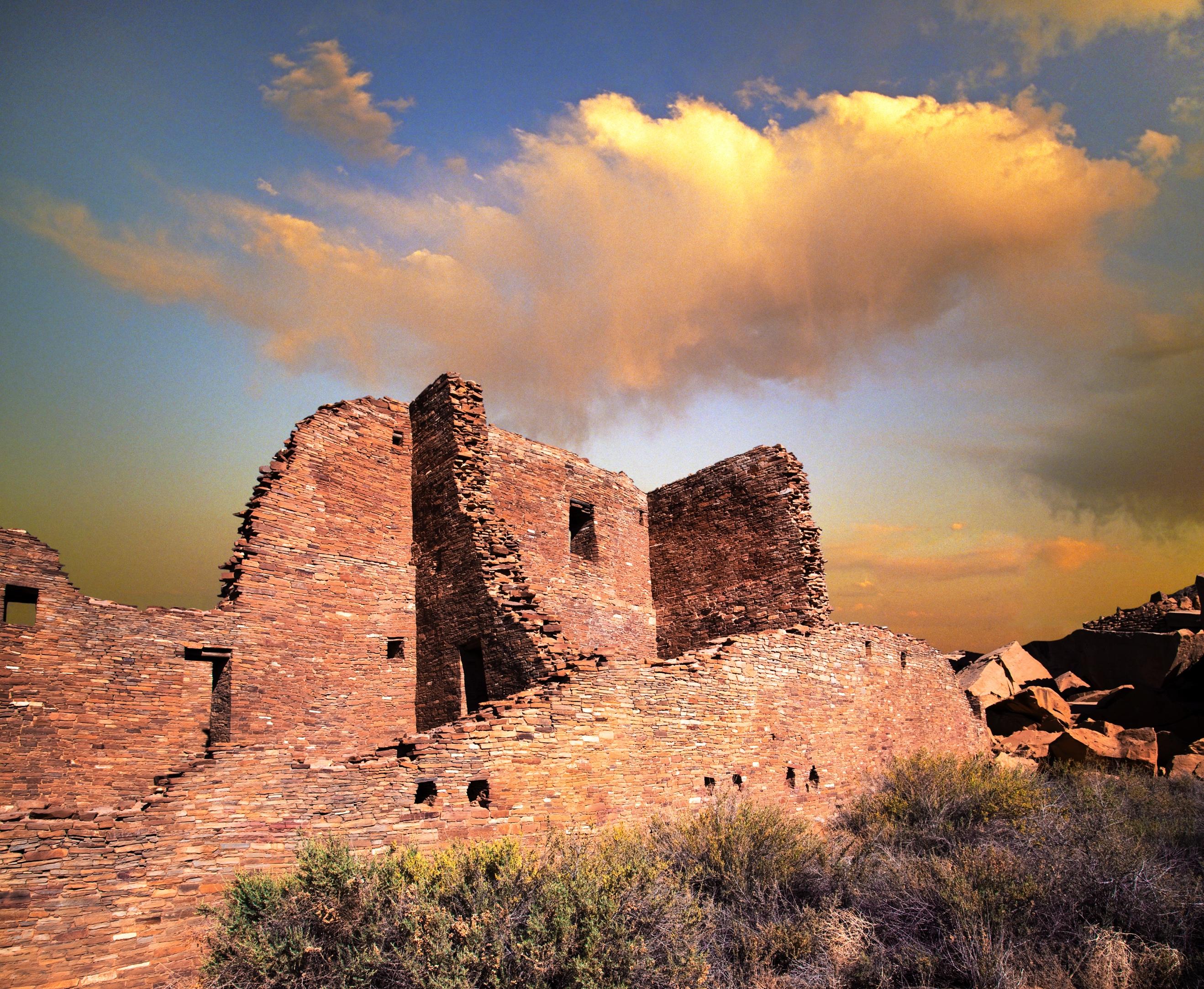
Late Afternoon, Chaco Canyon








